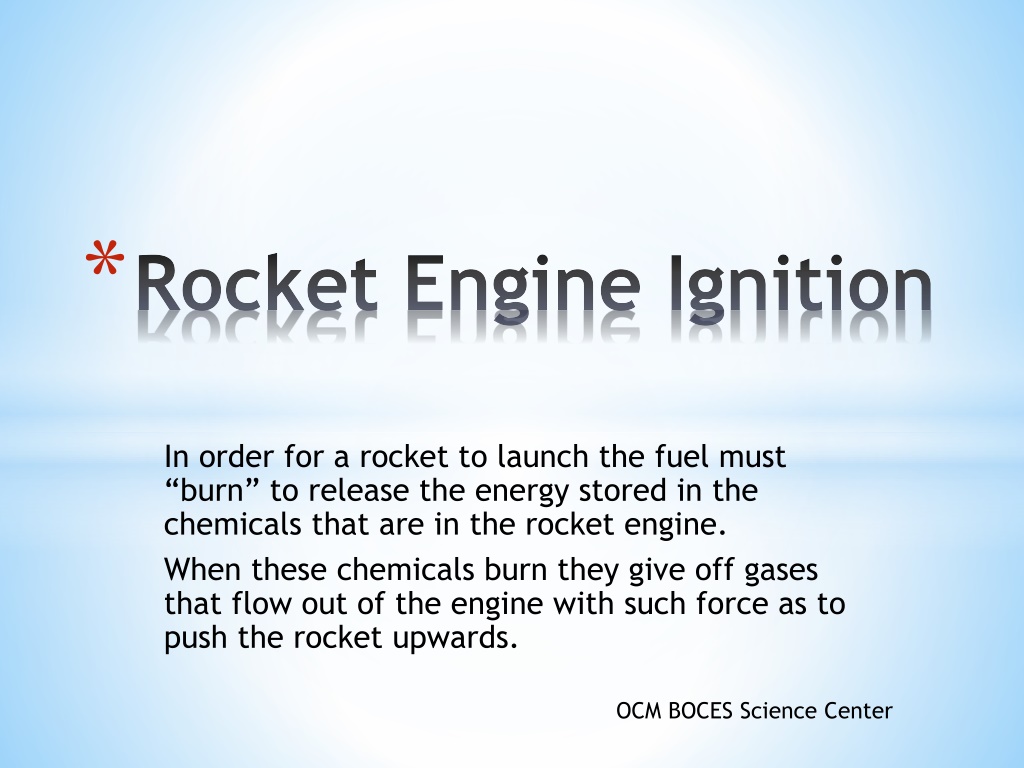Rocket Engine Ignition Process Explained
The rocket engine ignition process involves burning fuel to release stored energy, producing gases that push the rocket upwards. The ignitor heats chemicals in the engine, causing them to burn and release gases for propulsion. The ejection charge triggers the nosecone release for parachute deployment. Watch a video to identify the phases and consider differences with open-air ignition methods.
Download Presentation

Please find below an Image/Link to download the presentation.
The content on the website is provided AS IS for your information and personal use only. It may not be sold, licensed, or shared on other websites without obtaining consent from the author. Download presentation by click this link. If you encounter any issues during the download, it is possible that the publisher has removed the file from their server.
E N D
Presentation Transcript
*Rocket Engine Ignition In order for a rocket to launch the fuel must burn to release the energy stored in the chemicals that are in the rocket engine. When these chemicals burn they give off gases that flow out of the engine with such force as to push the rocket upwards. OCM BOCES Science Center
*Rocket Engine The ignitor is inserted into the opening in the engine. An electrical current heats the ignitor and the high heat starts the chemical in the engine burning. The burning chemicals release gases that expand as they leave the engine pushing the engine in the opposite direction. The burning finally reaches the ejection charge (chemicals with a quick explosive action) which pushes upwards to force the nosecone off releasing the parachute. Animated Graphics: http://www.launchpad2000.com/abmodroc.html
*Engine Ignition Set Up Engine clamped in place. Wires from ignitor in engine to launcher.
*Watch Ignition, Burn and Ejection Identify the three phases (thrust, coast (delay), eject) video Think about any ways that this open air ignition might be different than a rocket launch ignition.

 undefined
undefined


























